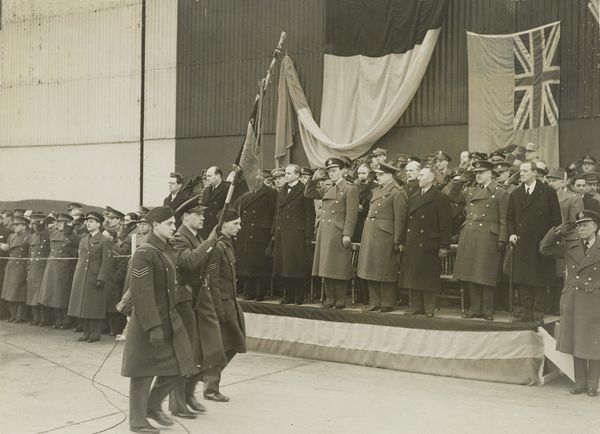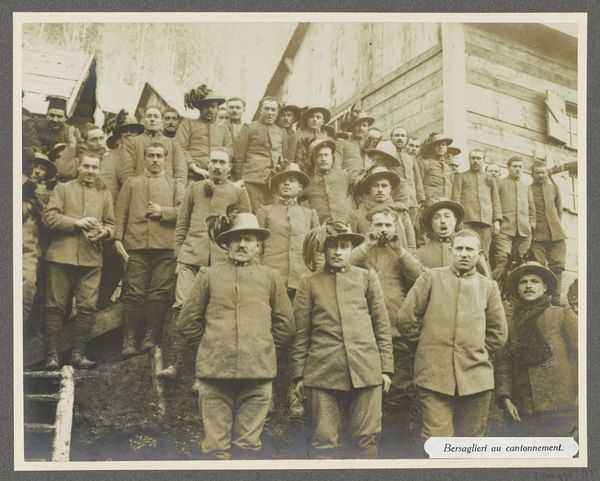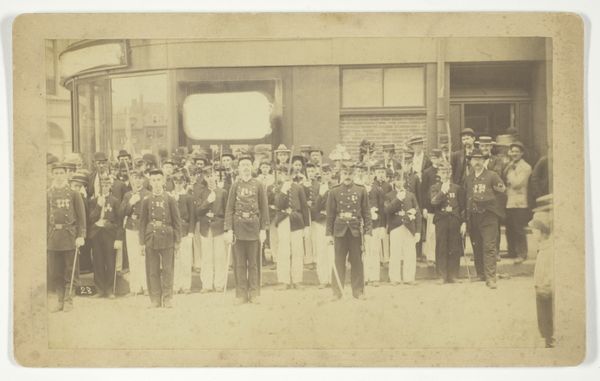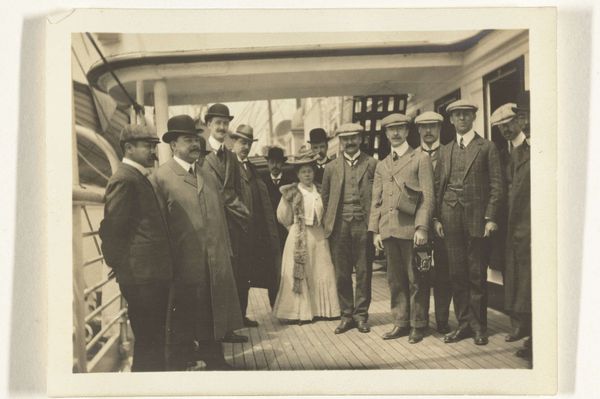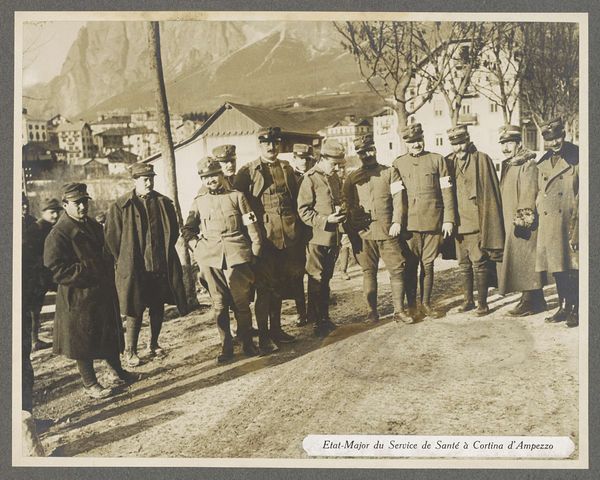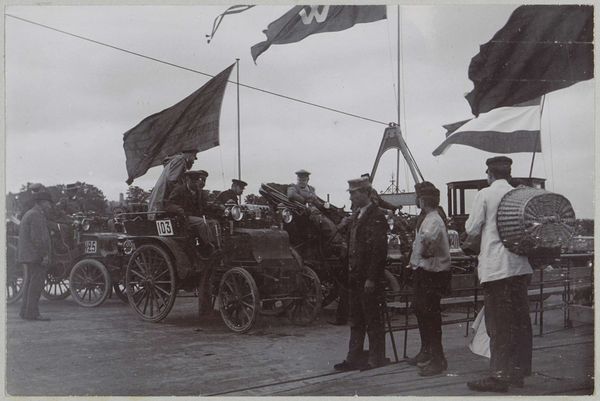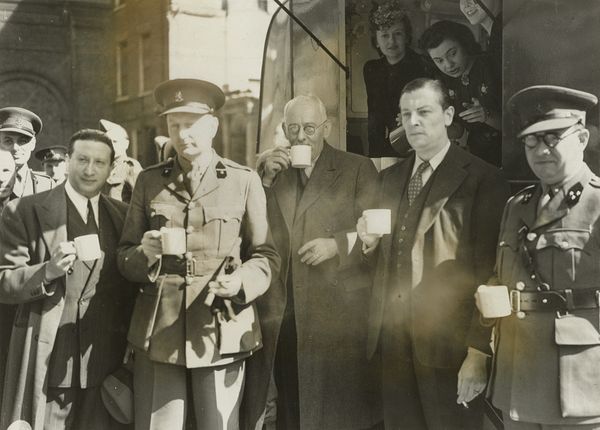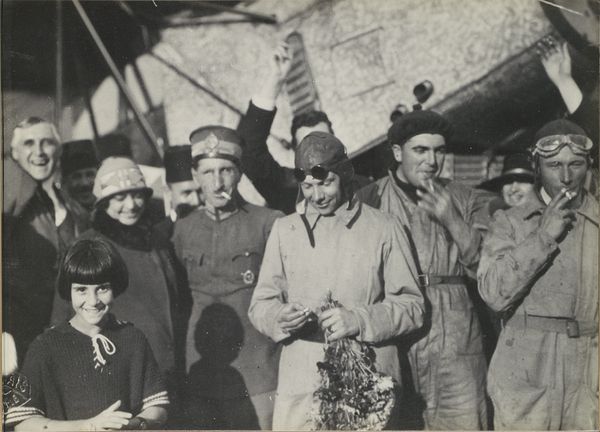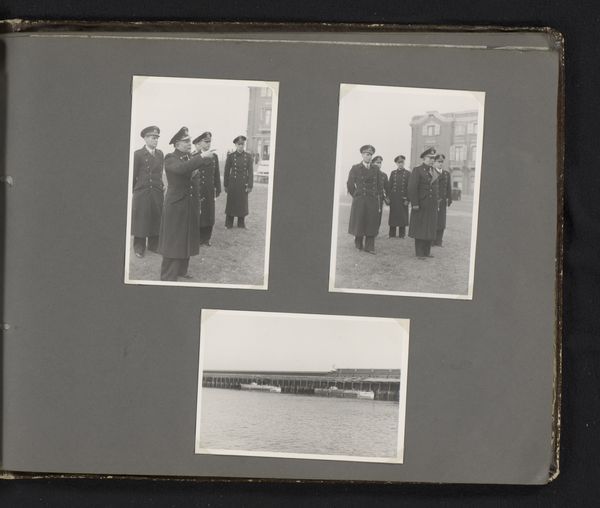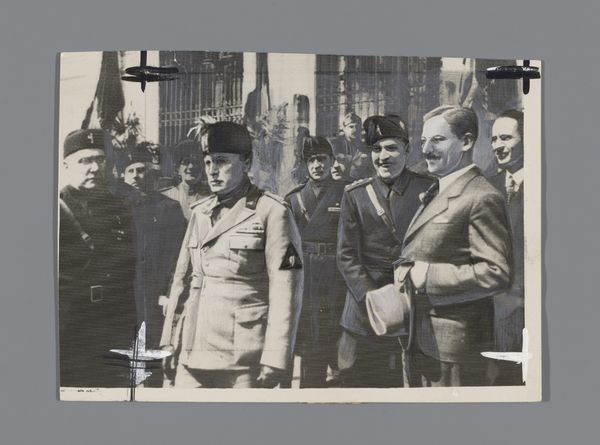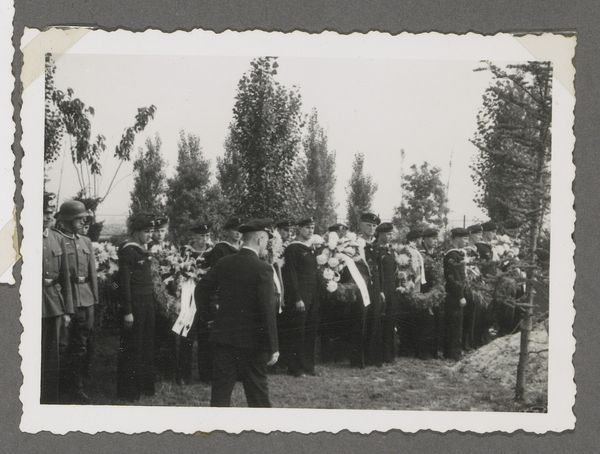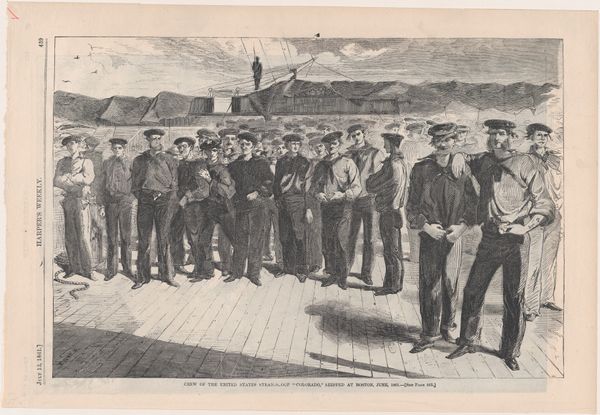
#
excavation photography
#
photo restoration
#
street shot
#
outdoor photograph
#
archive photography
#
culture event photography
#
historical photography
#
street photography
#
outdoor activity
#
person photography
Dimensions: height 13.5 cm, width 10 cm
Copyright: Rijks Museum: Open Domain
Curator: Here we have a photograph titled "Prins Bernhard bij een parade" taken by the Keystone Press Agency sometime between 1940 and 1945. Editor: It’s…somber. Everyone is lined up, looking serious in their heavy coats. The tonal range is tight, giving it this constrained, almost claustrophobic feel despite being an outdoor scene. Curator: Indeed. I'm interested in the staging itself. Note the constructed platform. What materials were used to build it? The photograph shows us its access points and its decorations. It begs the question: who built this? And how quickly? Was this a temporary, pragmatic construction, or something more symbolic? Editor: Good point. I am thinking about the socio-political landscape of the time. The photograph places Prince Bernhard in a very specific public role. During the German occupation, the royal family's image was meticulously cultivated to bolster morale and symbolize resistance. Curator: The framing itself speaks to control and visibility. Think about the labor involved in creating and distributing images like these during wartime. What paper was available? What was the cost of reproduction? How did distribution networks function under occupation? Editor: Exactly. And who controlled those networks? The propaganda machine was in full swing, using images like this as a potent tool. Each person, their attire, and position—carefully orchestrated. The photograph captures a public performance and speaks to how these events shaped public opinion. It suggests visibility for Prince Bernhard, the figure on display during a complicated period. Curator: Absolutely. Thinking about the tangible aspects adds another layer. This photograph exists as a physical object. Each print circulated was touched and seen and considered during its making and circulating. We should ask what kinds of resources would have had to exist to facilitate the taking, the printing, the circulation, the making, and finally, our seeing, of the photo. Editor: This piece certainly opens a window into how image-making and public perception intertwine during wartime. It makes us question how royal figures are commodified during times of political unrest, offering an optimistic image when there may have not been reason for optimism. Curator: For me, I keep thinking about all those who played a hand in producing the event for that single captured moment.
Comments
No comments
Be the first to comment and join the conversation on the ultimate creative platform.
